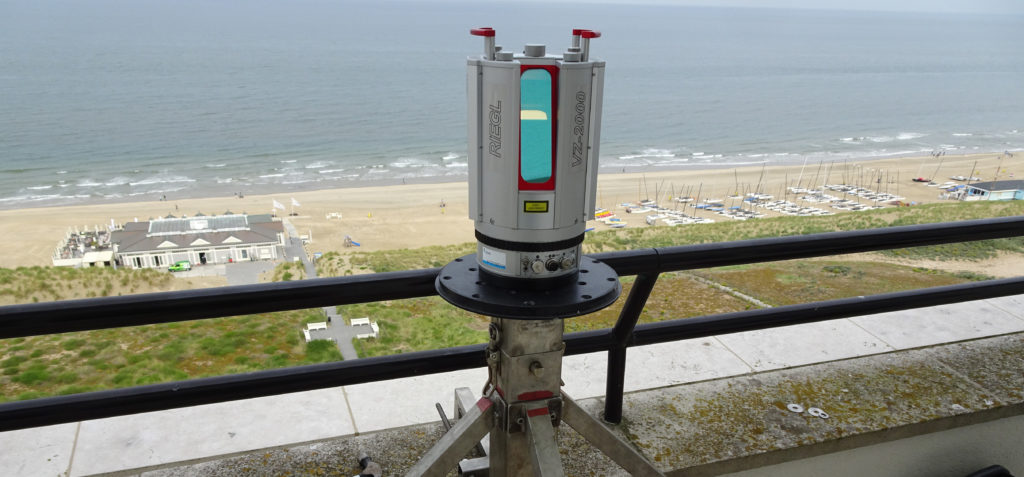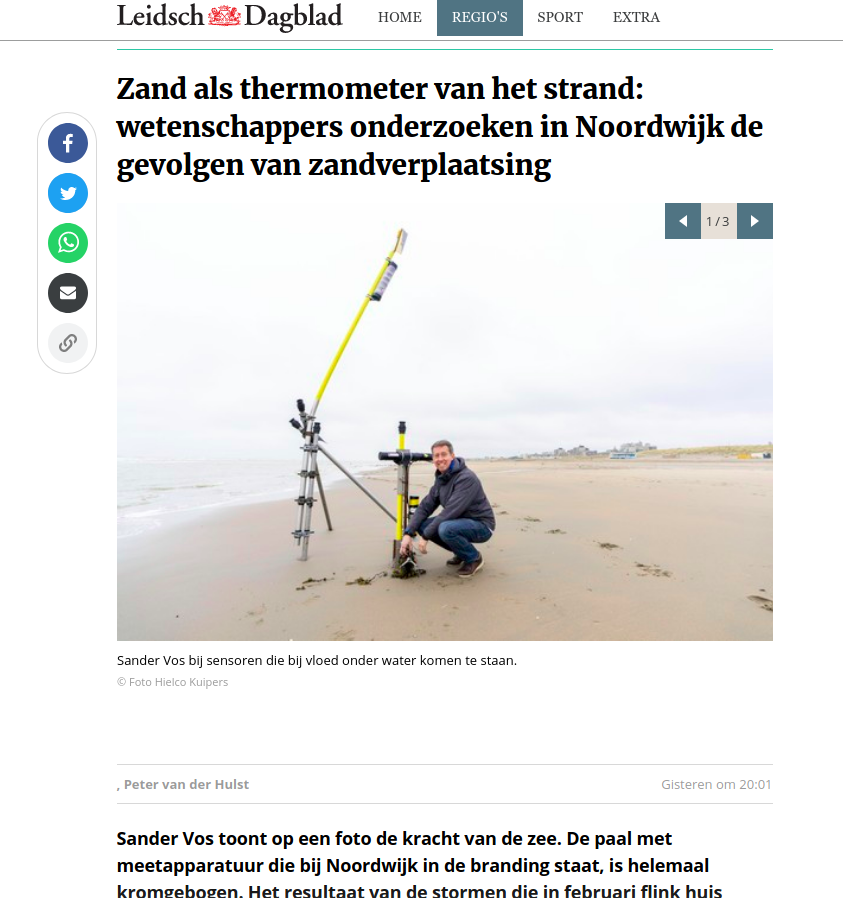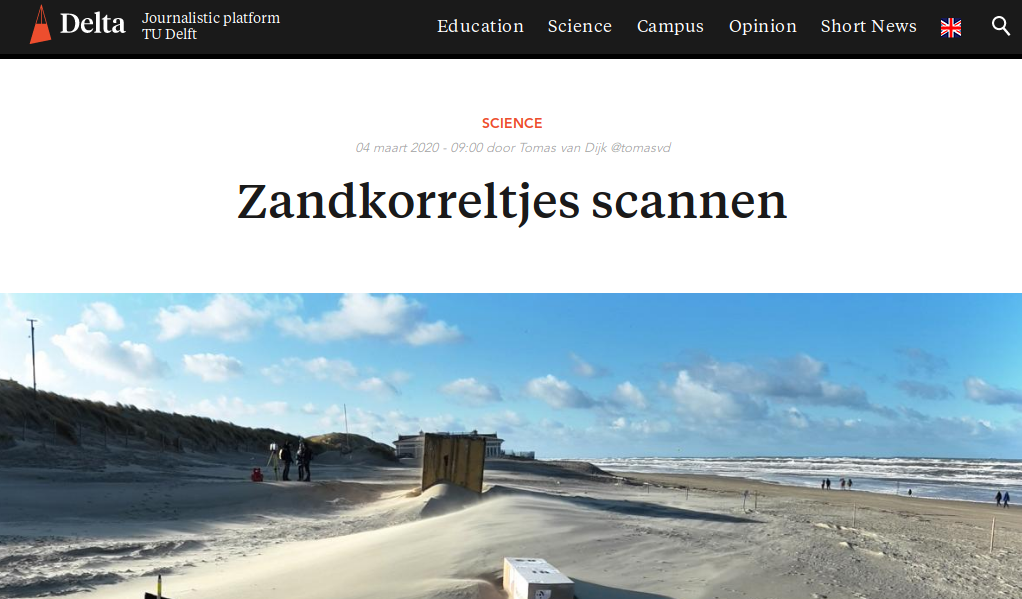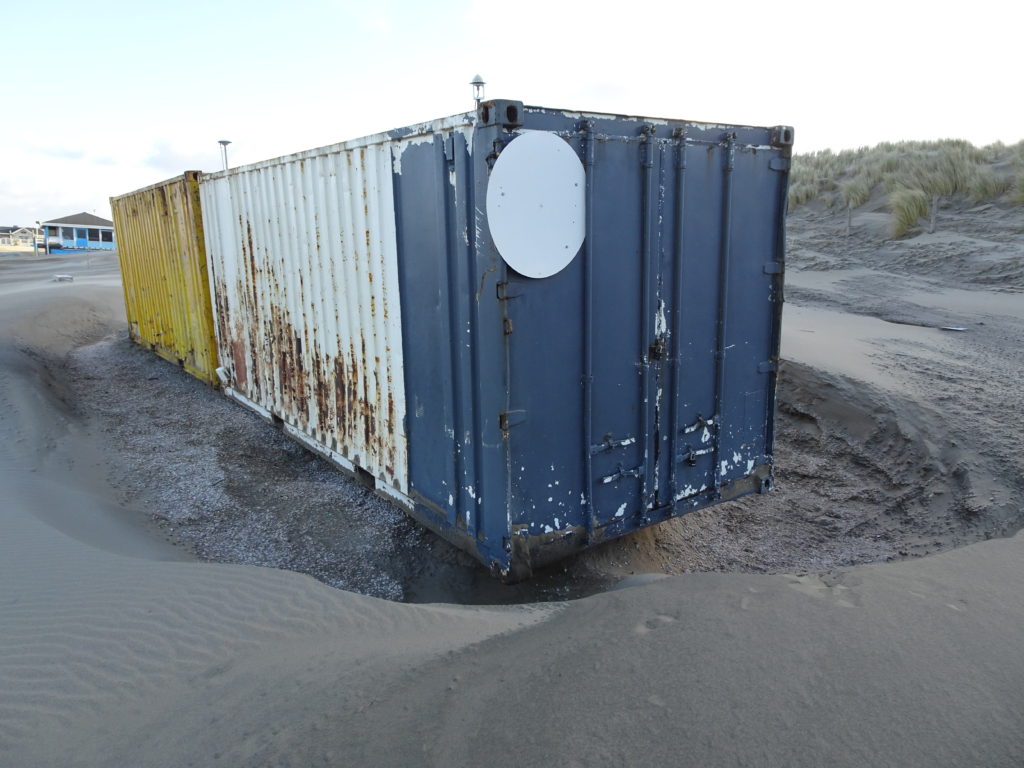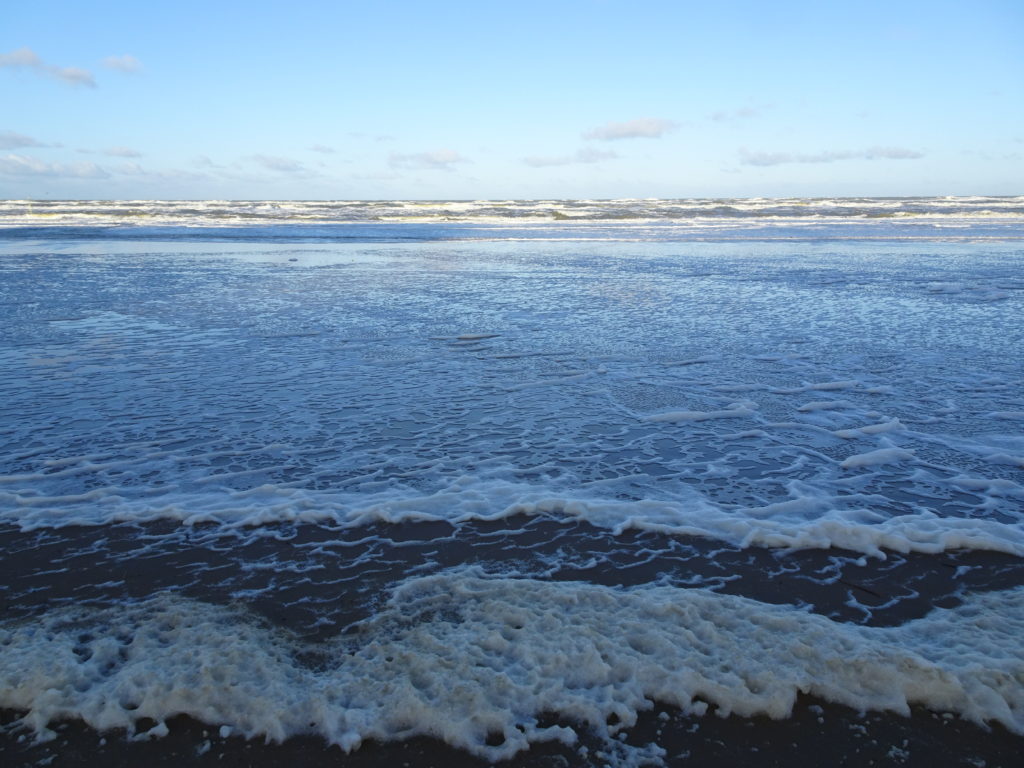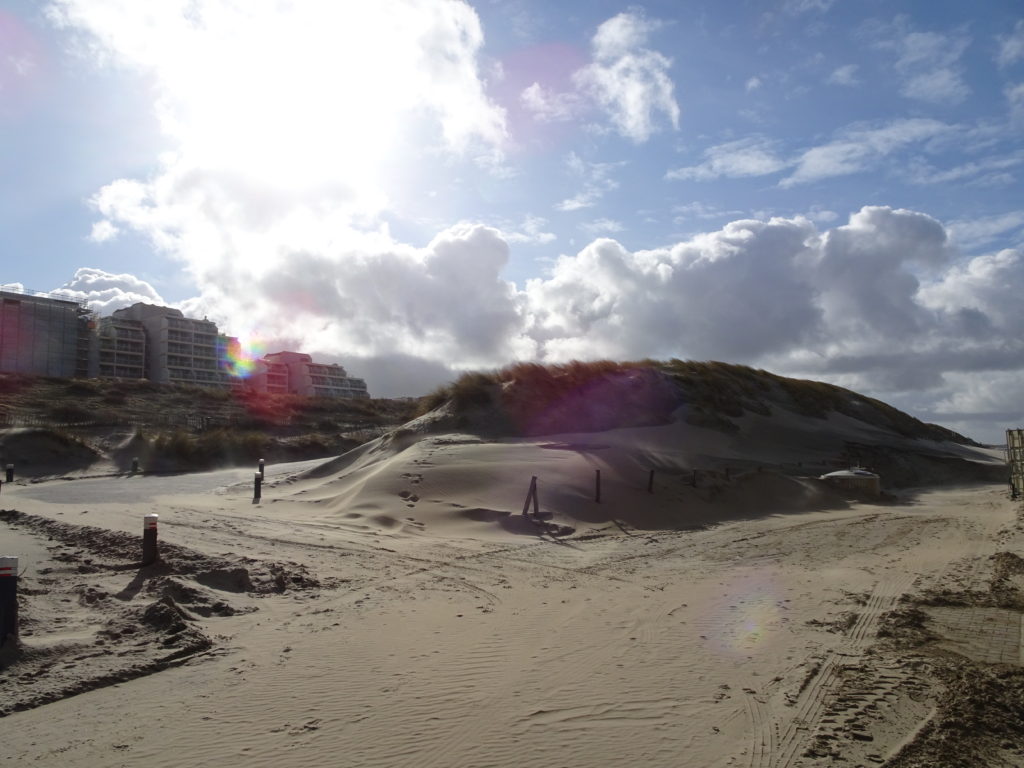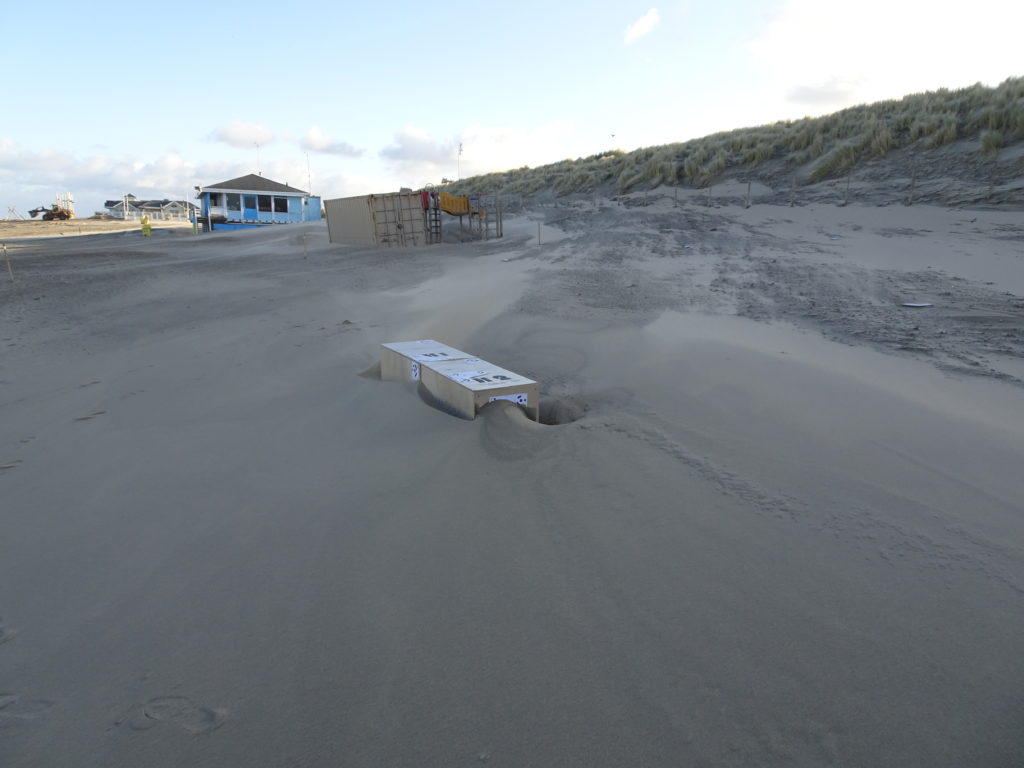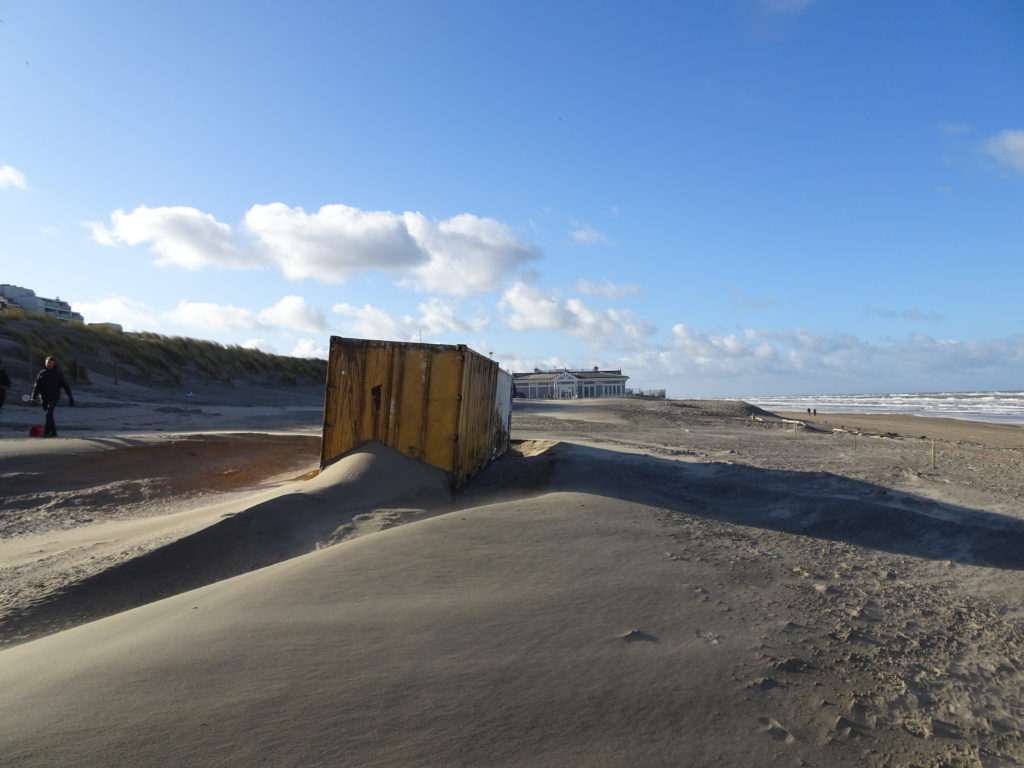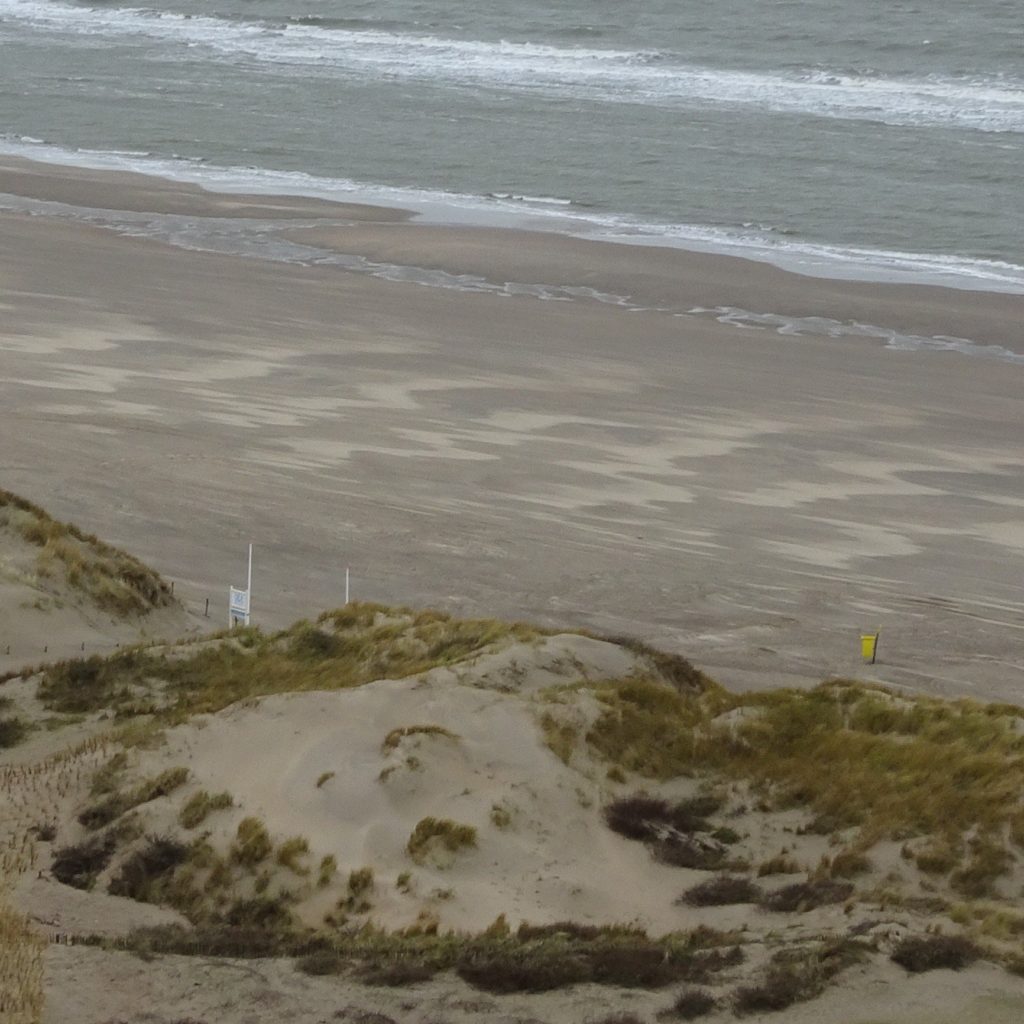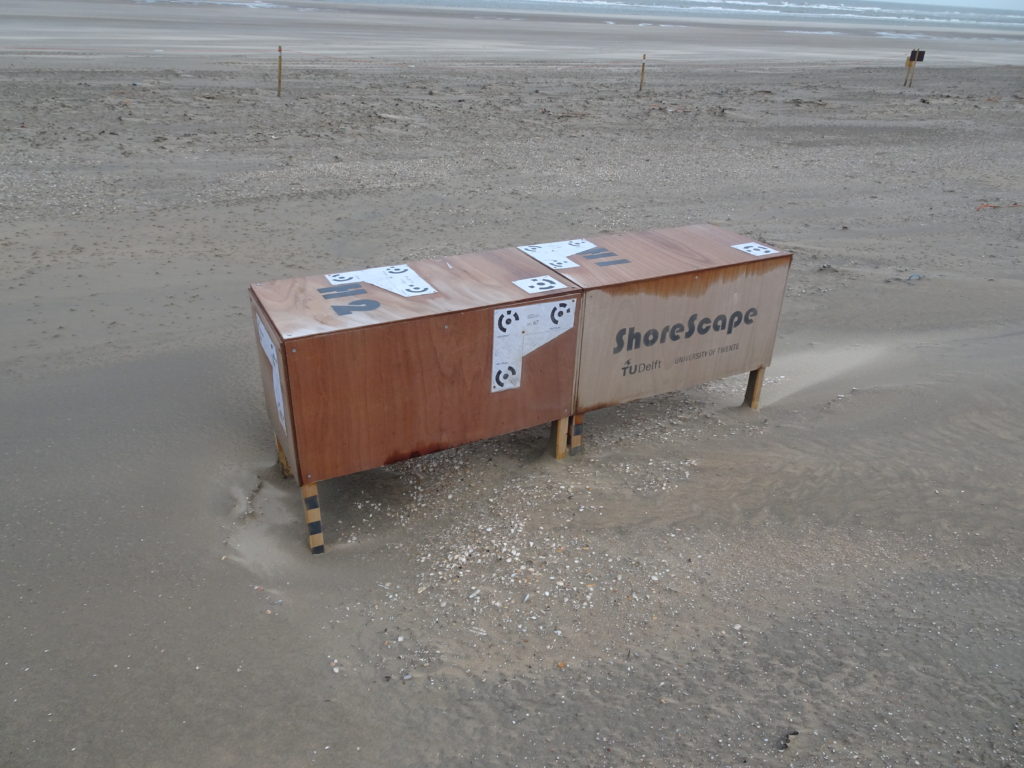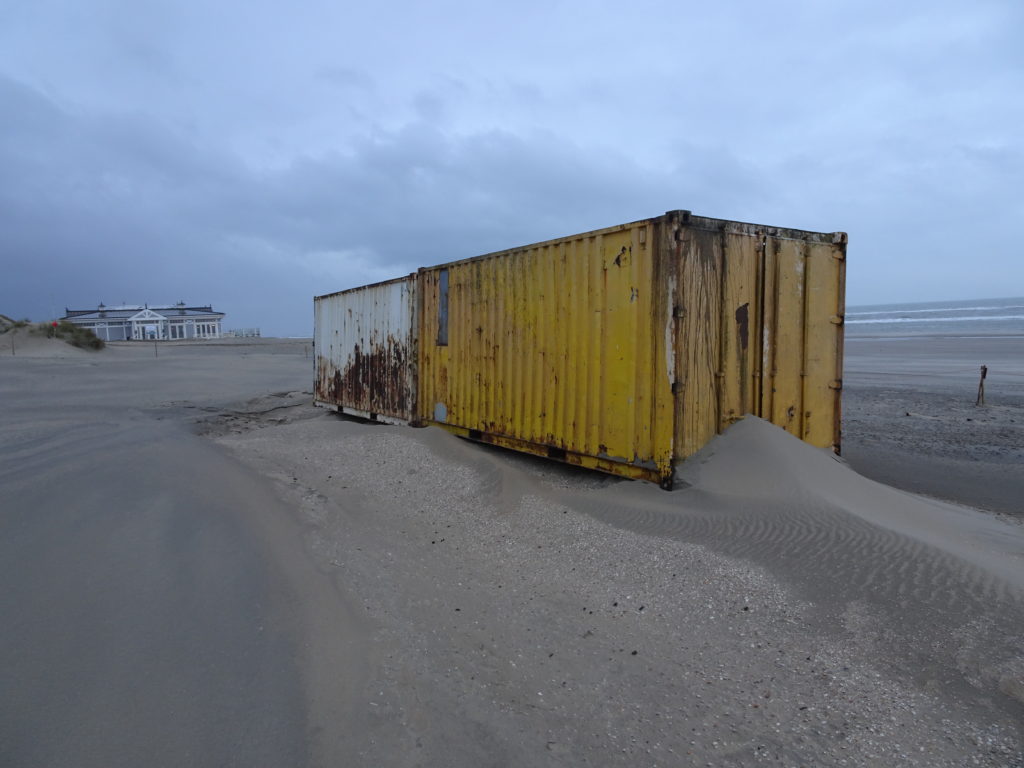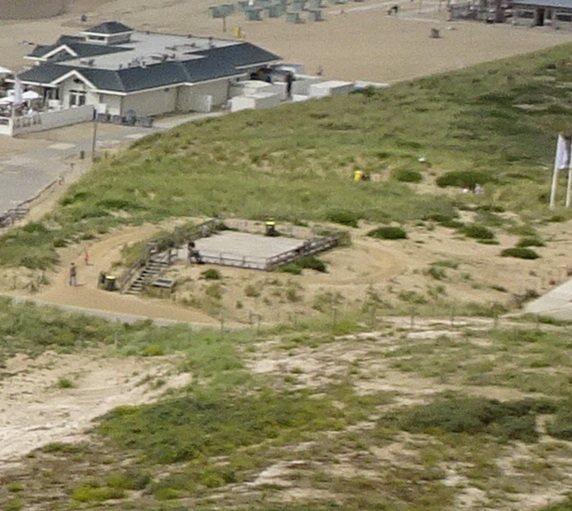
wooden deck before 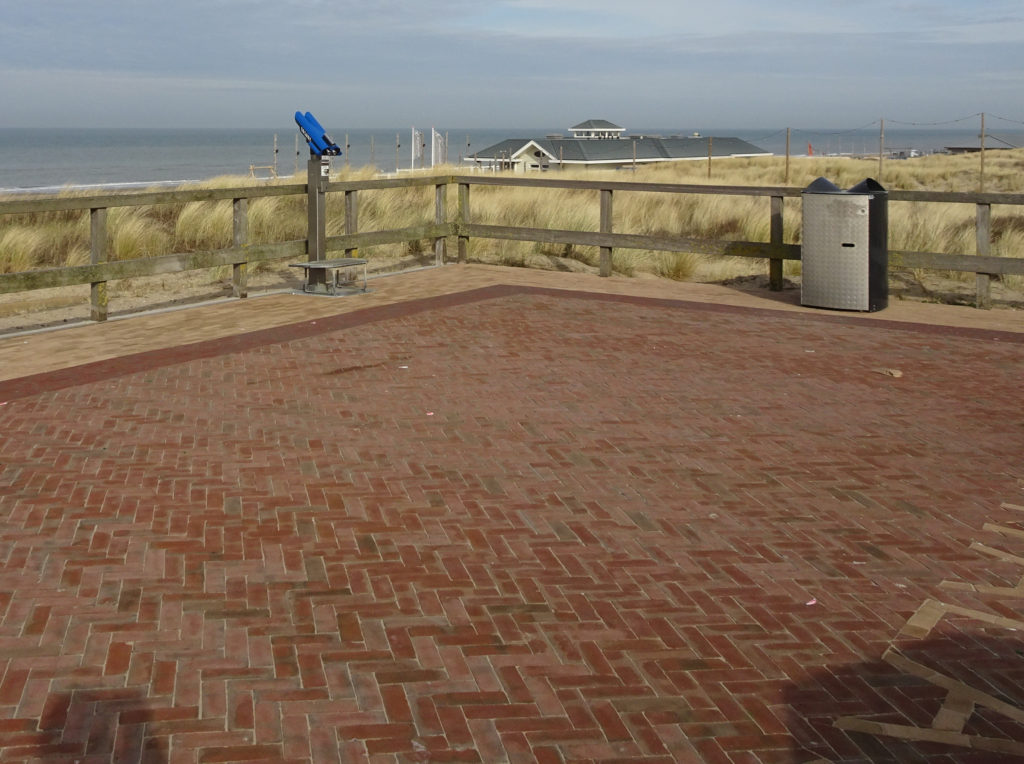
paved deck since Feb 2021
The observation deck in the dunes in Noordwijk is located to the north of our laser scanner and just within the field of view. At our monthly round, where we check on the location, take some extra scans of the dune foot and collect GPS measurements of the beach, we also measure the GPS coordinates of this observation deck. Until the beginning of this year the deck was made of wood. Now, since February 2021 the deck is paved with bricks. This will increase the stability as a reference in our point clouds. But of course, this change does not allow for comparison with the data of the deck before it was paved.

